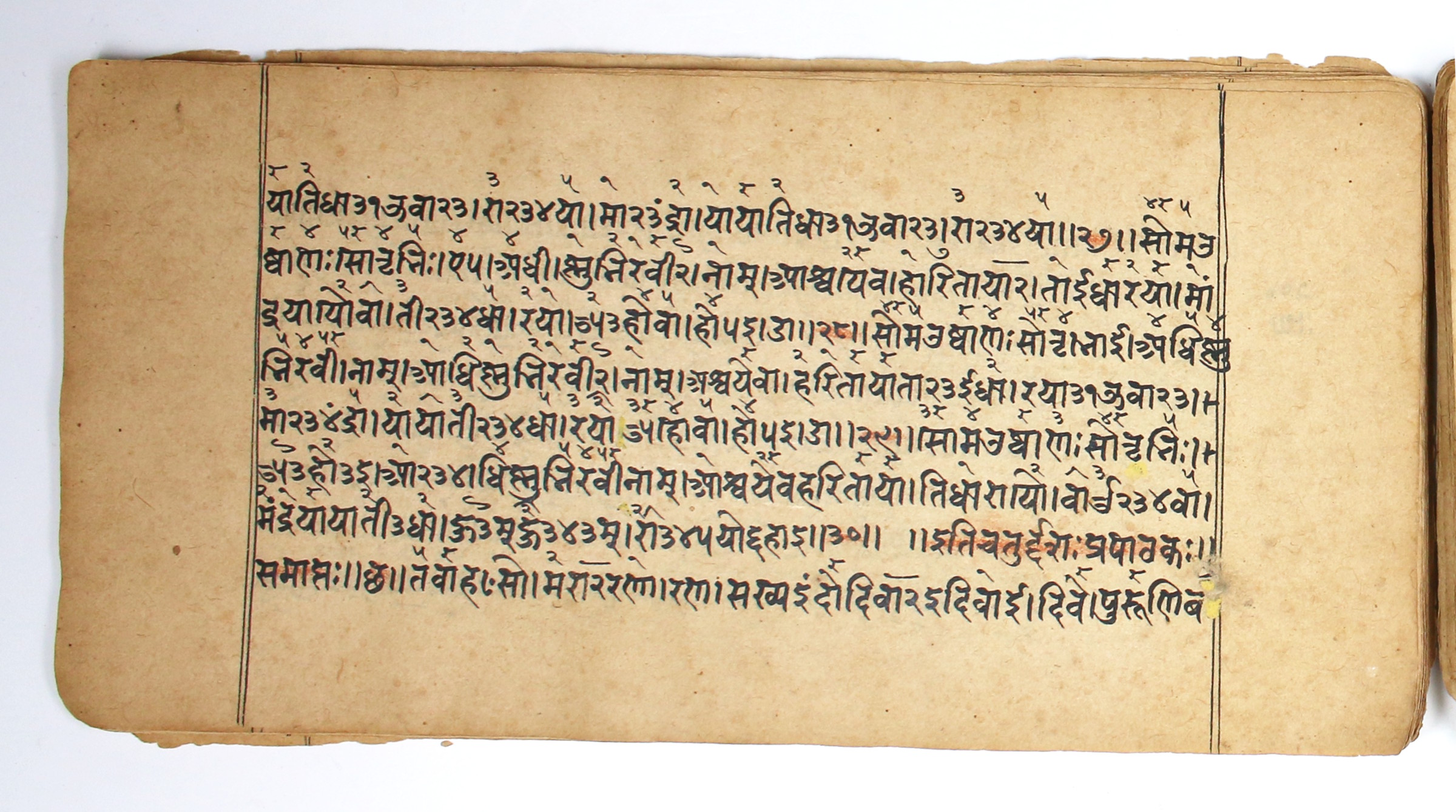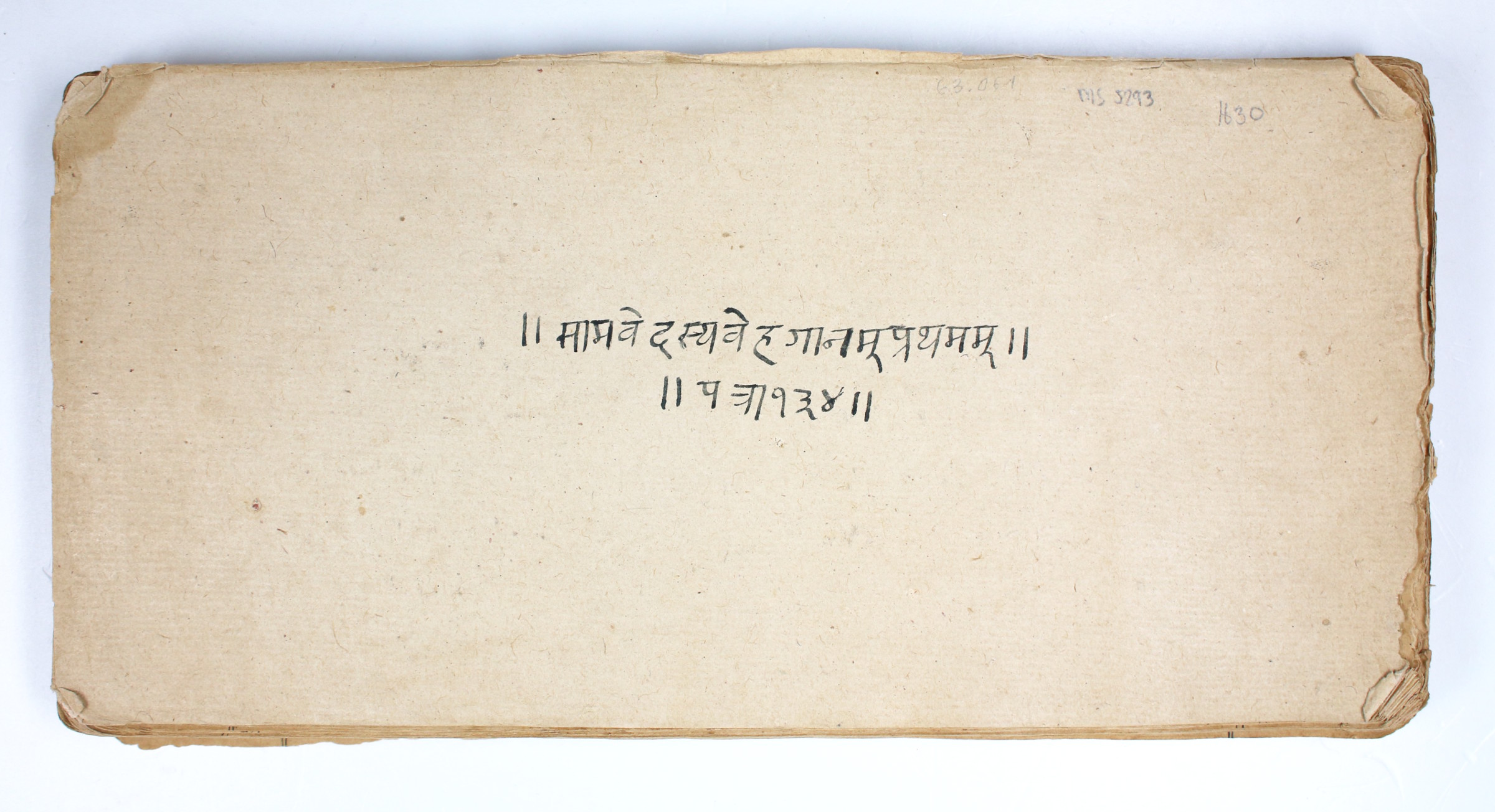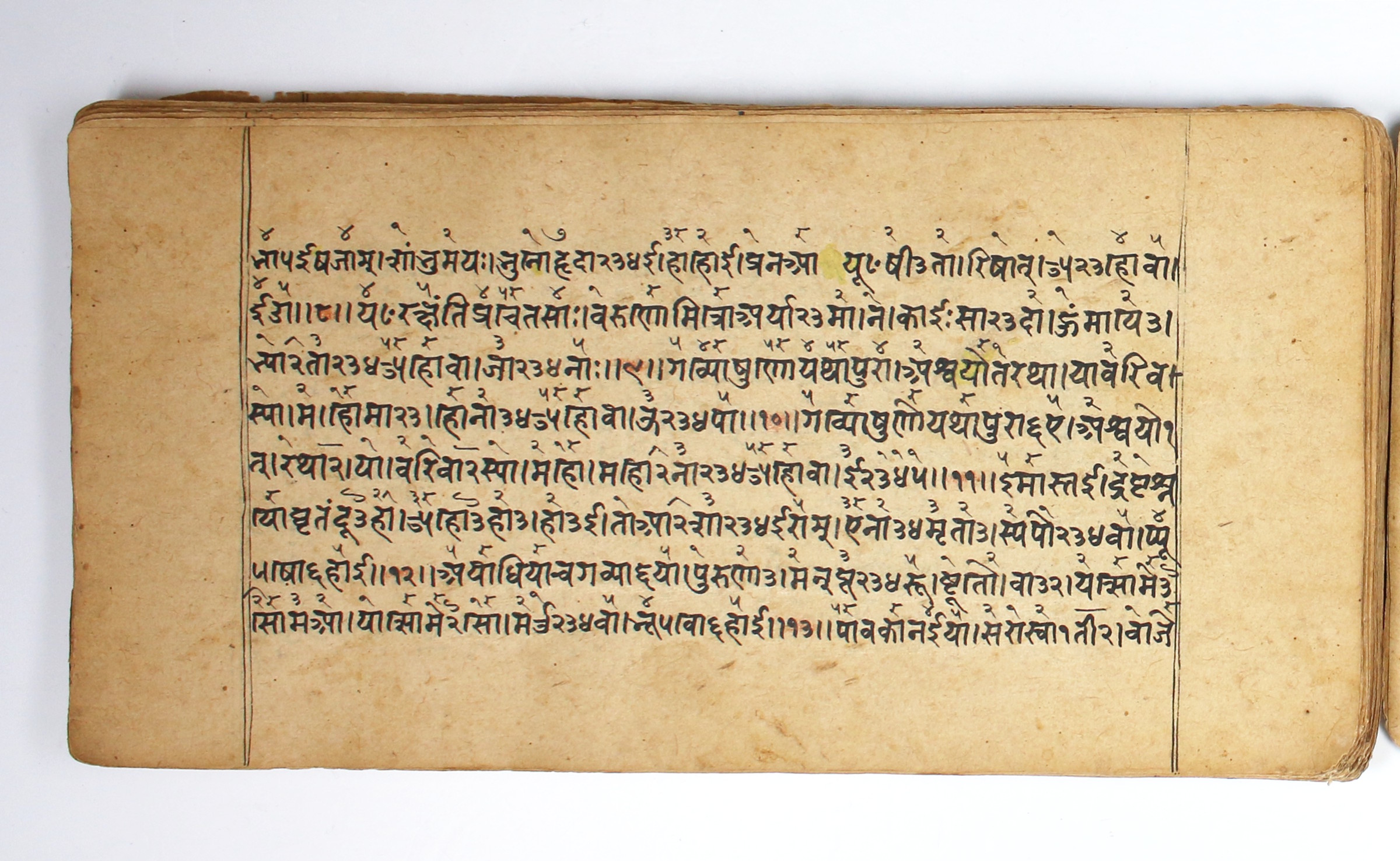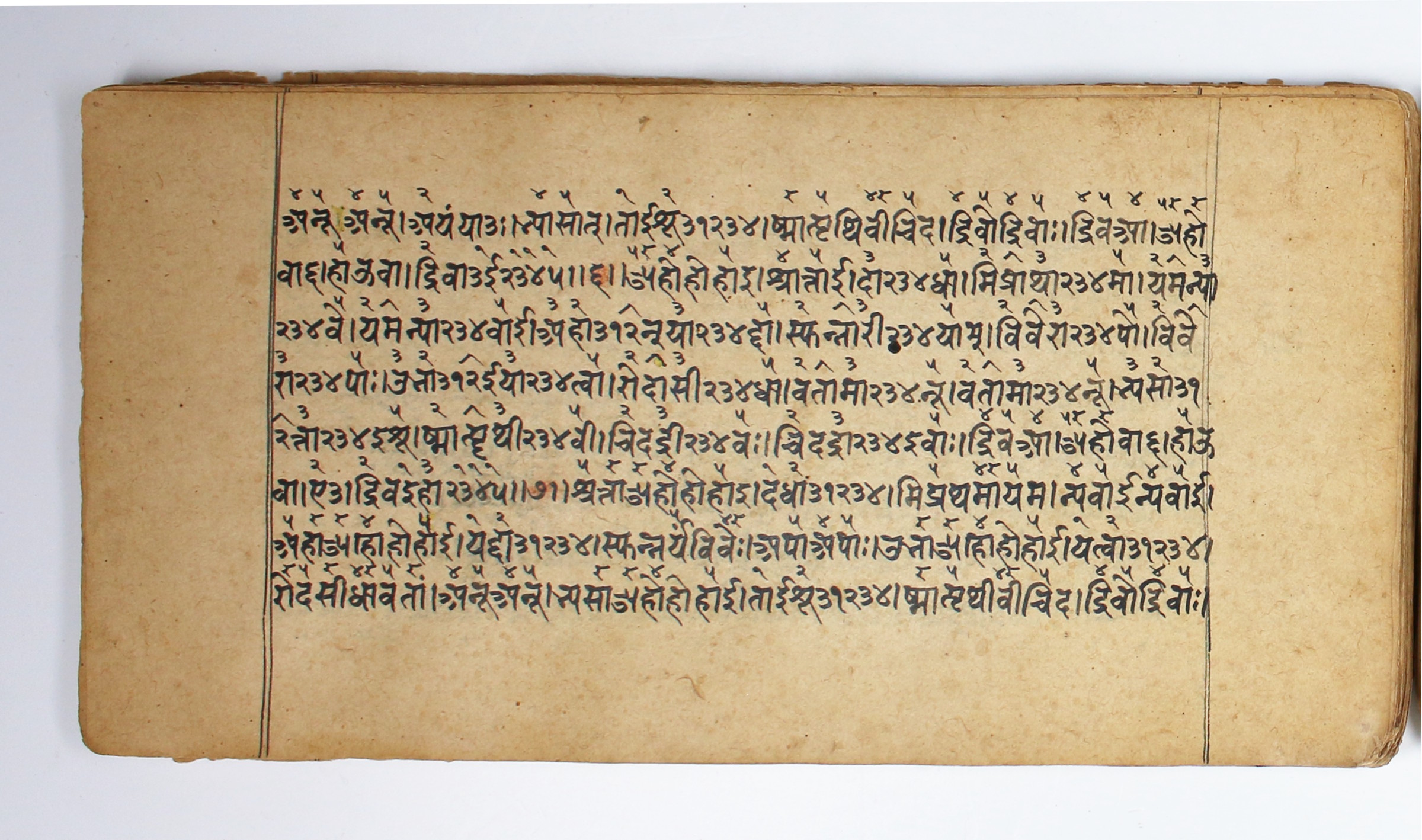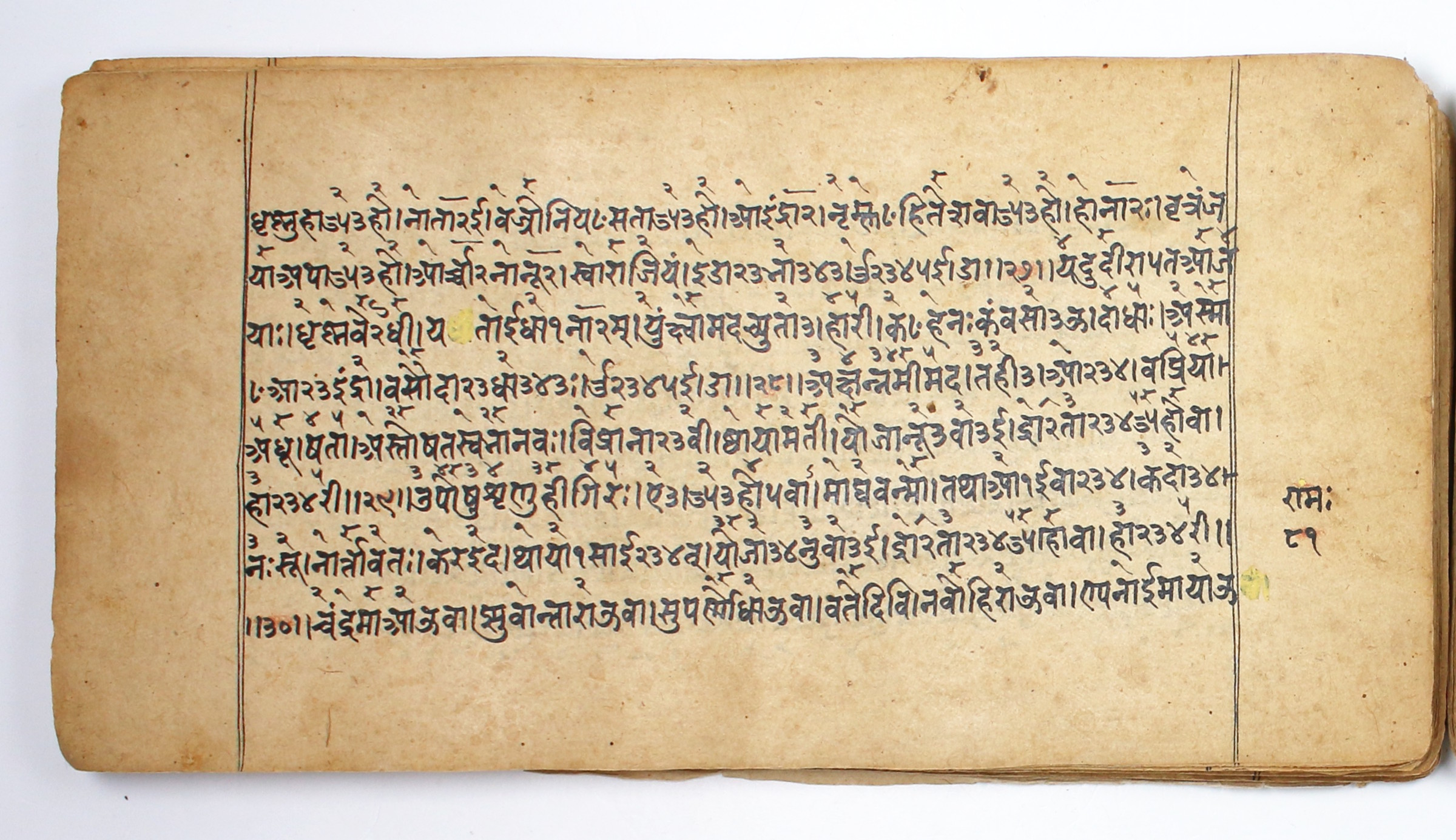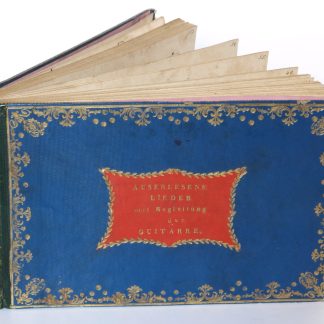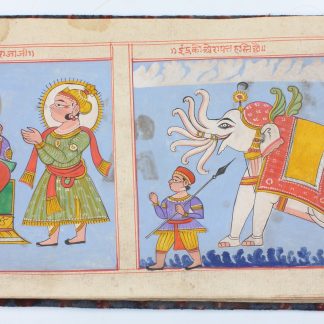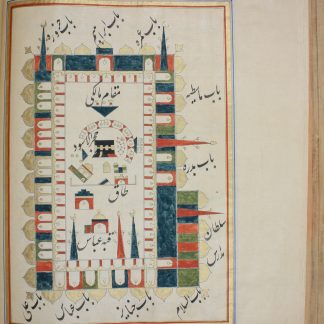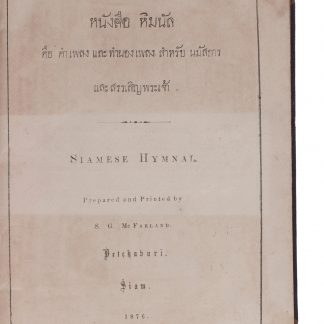"Thus speaks out the manuscript": the musical notation of the Samaveda
[The Veyagana].
Small oblong folio (290 x 142 mm). 134 ff., loose and numbered. Sanskrit manuscript on paper. A conservative Devanagari script, with e- and o-matras more often than not prefixed to consonants instead of superscript, and horizontal serifs slightly hooked in the manner of kutila scripts. Loosely arranged in a custom burgundy cloth clamshell case.
With musical notation that can be traced back to the Vedic period of late Bronze Age: a manuscript of the Veyagana, executed in traditional style in 17th century India. Also known as the Gramageyagana, the Veyagana is one of the songbooks (ganas) of the Samaveda, the text which is itself described as the "Rigveda set to music", and one of the most important texts for the musical history of the Indian subcontinent (Staal, p. 4).
The present manuscript follows the text of the Kauthuma recension of the Purvarcika, the first book of the Samaveda. From the perspective of modern musical notation, it is the Veyegana's simple and effective notation method which is most striking: unlike many visual, geometric, or diagrammed musical notations, that of the Veyagana is based on simple lines of numerals which gloss each line of chanted text in the manuscript. Each number corresponds to a specific hand gesture, and from this gesture a singer or group of singers would know exactly the tone in which their chant should be conducted. This simple interaction between manuscript, physical movement, and musicians is capable of preserving the incredible range of music of the Samaveda, and is a distinction of this manuscript.
The Veyagana comprises the songs which were meant to be sung among people, in daily life and in villages. Its companion piece, the Aranyagana, comprised the more esoteric music meant to be performed for personal study in isolation, in the forest, or other suitable environments set apart from regular life. This copy was made by a scribe whose name is recorded, as he left a detailed colophon:
"In the year 1729 [1672 CE] in the month of Phalguna on the second day of the waxing lunar fortnight. Today here in the city of Toddapura in the reign of King Anandasimha this book was written by Vyasacaturbhuja, son of Vyasanarahari from Srimala. For his own benefit. For the benefit of others. Whether correct or incorrect, blame should not be apportioned to me. May it be auspicious. May it be pleasing. May it be so. It should be protected from oil, it should be protected from water and from loose binding, it must not be left to the rats: thus speaks out the manuscript."
From its scribe Vyasacaturbhuja (active 1672). Later in the collection of Sam Fogg, Manuscripts from the Himalayas and the Indian Subcontinent, cat. 17 (1996), no. 56. Acquired by the Schoyen Collection as MS 5293 with numbered bookplate of the same, as part of the collection's Composers at Work category, introduced by Dr Martin Schøyen in 2016 (Oslo and London).
Gentle edgewear, light discoloration; altogether remarkably well preserved.
Schøyen MS 5293. Cf. Frits Staal, Discovering the Vedas: Origins, Mantras, Rituals, Insights (Penguin, 2009), pp. 4f.



